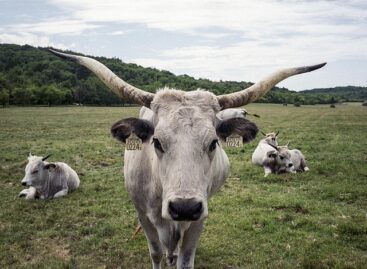FAO unveils new public tool based on agricultural census data
Policy makers and the researchers who advise them now have a powerful new tool. The Food and Agriculture Organization of the United Nations (FAO) is endowing FAOSTAT, the world’s largest agricultural data base, with an important new domain that enables much easier comparison and assessment of trends over time of the agricultural structures of all Member countries.
An open access portal serving as a global public good, FAOSTAT gathers and harmonizes a wealth of data on the production, trade and consumption in the agricultural sectors, by far the world’s largest economic sector in terms of employment and sustaining livelihoods. In recent years FAO has added an increasing array of critical information on greenhouse gas emissions, land use, forest cover and investment. Now it is adding “Structural Data from Agricultural Censuses,” which present fine-grained national reports that track, among others, how large farm holdings are, who works on them, and who owns them.
“This data is not available anywhere in the world,” says Jairo Castano, Senior Statistician and Leader of the FAO’s World Programme for the Census of Agriculture, and who steered the project to fruition. “This is precious bottom-up information based on actual farms, all the world’s farms.”
The new domain allows rapid access to knowing how many farms exist in a given country, what their sizes are, the tenure typology determining its ownership, the farmer’s gender, and how many people live and work on them, all sourced to national Agricultural Censuses.
“This allows policy workers to compare the structure of the agricultural sector of one country with that of another or of a region, while also allowing researchers to analyze, for example, the distribution of farm sizes both at the national and global level,” Castano said.
Some takeaways
The Russian Federation has the largest total area covered by farms, at 451 million hectares, followed by Australia, the United States of America and Brazil.
Russia also has the most holdings or farms – regardless of size – per 1 000 people, followed by China, Viet Nam and India.
The countries with the largest average farm size are Australia, followed at a distance by Iceland, Argentina, Uruguay, Canada, New Zealand and Czech Republic.
Among countries that have conducted a census, those with the smallest reported average holdings’ area are Palau, Bangladesh and Egypt.
Forty percent or more of all agricultural holdings are headed by women in Lithuania, Latvia and Eswatini. Nowhere is that above 50 percent.
In eight countries, 60 percent or more of farm land is rented rather than operated by owners. Apart from Northern Mariana Islands, they are all in Europe, including France and Germany.
Holdings operated by juridical persons – corporations, cooperatives or government agencies – are most frequent in France, Uruguay, Guam, South Africa, Czech Republic and Iceland, and rarely exceed 10 percent. When measured by area instead of individual units, however, juridical control characterizes more than two-thirds of holdings in Namibia, Slovakia, Mauritius, Czechia and Bulgaria, followed closely by Peru and Hungary.
Countries where most of the household members in agricultural holdings were actually engaged in agriculture include Brazil, Viet Nam, Uruguay and Republic of Korea. The trend is increasing in those countries as well as in Burkina Faso, Myanmar and Japan .
The importance of censuses
The evident variety of agricultural structures that can appear in such classifications highlights the importance of tailored policies, which can be improved by the historical evidence the new FAOSTAT domain offers. The data currently encompassed the census rounds of 1990, 2000 and 2010, with 2020 data soon to be added as it arrives.
FAO’s Statistics Division will also embark on the process of scanning, text mining and uploading historical data, some of which goes back to the 1930s and was initially collected by the International Institute of Agriculture, an entity whose role FAO subsumed when established in 1945.
While the new FAOSTAT domain offers a powerful tool for all to use, it is built on the data gathered by the programme that FAO oversees through the World Programme for the Census of Agriculture.
Prior to the rollout of the new open access tool, FAO experts did painstaking work to calculate the global role in feeding the world performed by the world’s smallholders. As the new domain fills out, more granular and policy-relevant analyses will be easier to conduct, both by FAO and governments and researchers in Member countries.
Related news
Cattle farmers receive new targeted support
🎧 Hallgasd a cikket: Lejátszás Szünet Folytatás Leállítás Nyelv: Auto…
Read more >The government is helping farmers with a loan moratorium
🎧 Hallgasd a cikket: Lejátszás Szünet Folytatás Leállítás Nyelv: Auto…
Read more >Balázs Hankó: there is huge potential at the Gödöllő University
🎧 Hallgasd a cikket: Lejátszás Szünet Folytatás Leállítás Nyelv: Auto…
Read more >Related news
Cattle farmers receive new targeted support
🎧 Hallgasd a cikket: Lejátszás Szünet Folytatás Leállítás Nyelv: Auto…
Read more >The government is helping farmers with a loan moratorium
🎧 Hallgasd a cikket: Lejátszás Szünet Folytatás Leállítás Nyelv: Auto…
Read more >NGM: conscious shopping for peaceful holidays, consumer protection advice for the Christmas period
🎧 Hallgasd a cikket: Lejátszás Szünet Folytatás Leállítás Nyelv: Auto…
Read more >




